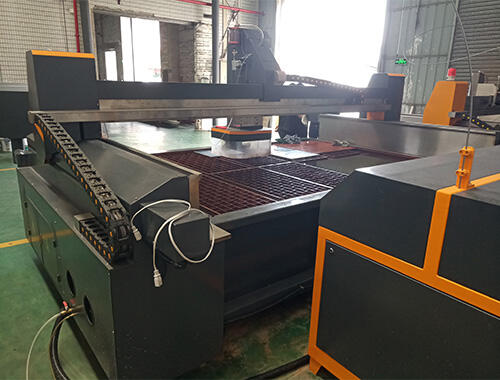Natural stone and tiles are two of the most ubiquitous materials for construction worldwide - there have always been necessary material elements in this area, both because they offer strength, and due to their beauty. Nevertheless, the energy conversion needed to make these materials into functional products is frequently accompanied with a large cost and carbon foot print. Energy-efficient cutting machinery is one powerful way of addressing this challenge.
State-of-the-art technology that not only improves cut quality and speed but also saves wasted energy is available on modern cutting machines. They use advanced sensors and software that accurately measures the size of the stone to minimize material waste, it also makes easy for an operator to cut more stones in less time without any error/s. Besides this, the upgraded, larger cutting machines now are equipped with great energy-efficient motors providing optimal-performance while using less power. Advanced cooling systems: ensuring ideal operating temperatures for longer, thereby also keeping wastage of energy to a minimum and increasing the longevity of machinery and its components.
Environment Friendly Waste Management Aiding Energy Efficiency in Marble Polishing Devices
Another problem is that the cutting takes place in a lot of water, which could be problematic in regions where there are little to no resources on board. Nonetheless, there are sustainable alternatives that spare the environment and provide an efficient way of polishing. One option is to switch from traditional wet polishing methods to modern "dry-" or ``dust-free" polishing systems that incorporate special abrasive discs, saving mass amounts of water. And investing water recycling technology, allows companies to also recover and reuse the used in polishing process,which can reduce a lot of waste generation.
In addition, with the installation of energy-saving motors on two-sided polishing machines, power consumption is also reduced and savings in this area can be significant.
Stone and Tile Grinding Machinery: Improving Energy Efficiency
It is an energy-intensive process using a grinding stone to achieve the thickness and finish desired in tiles materials. Implementing energy-saving practices not only lowers a business' carbon footprint but also operates that company in an environmentally sustainable manner. For example, purchasing the latest in efficient grinding machines can result in large energy savings. These include the upgraded machines with enhanced efficiency for optimized productivity and quality using much lesser power, with up to 50% faster grinding times, while consuming as well about 20 % less of electricity.
In addition, sensors are integrated in most modern grinding machines to monitor and control the grinding process for optimal efficiency. They underpin the ability to sense material coarseness between waste rocks and valuable ore for more precise results, less energy wastage as well.
Stone and Tile Processing Plant Heating, Ventilation Air Conditioning Systems
Heating and cooling systems are vital for the conversion of stone or tile materials, which consume a huge amount of energy. For example, companies can use energy-saving technologies like heat exchangers to channel the excess or waste heat generated by their machinery (or ambient difference in temperatures) to modulate building climate inside cost-effectively and sustainably. In processing, upgrading process facility insulation significantly cuts energy costs as well. The installation of large windows on the south side, such as energy-efficient or high-performance doors and glazing, can help minimize heat exchange between your facility with outdoor conditions. Reduce heating system load to reduce overall consumption (you also save operating costs).
Stone Tile Machinery: Rational Use of Energy - Implementation of Compact and Efficient Solutions
Today, the scenario of the stone and tile industry is moving at a fast pace with an array of solutions coming forward to ensure sustainable energy practices when it comes to this sector. Ultimately, they provide water recycling systems that enable to cut down a substantial consumption of waters by filtering and reusing them wherever the case may be. Additionally, some state-of-the-art equipment now includes solar panels as a means to reduce energy usage and the overall carbon footprint for businesses at little or no cost.
As can be concluded, the stone and tile sector take massive steps in sustainable development by requiring new implementations like energy-effective technologies. There are plenty of opportunities to reduce energy use at each stage - from cutting, grinding and polishing - in the processes involved helping businesses not only minimise their impact on the environment but also improve product cost efficiencies and profitability.
Table of Contents
- Environment Friendly Waste Management Aiding Energy Efficiency in Marble Polishing Devices
- Stone and Tile Grinding Machinery: Improving Energy Efficiency
- Stone and Tile Processing Plant Heating, Ventilation Air Conditioning Systems
- Stone Tile Machinery: Rational Use of Energy - Implementation of Compact and Efficient Solutions

 EN
EN
 AR
AR FR
FR DE
DE IT
IT JA
JA KO
KO PL
PL PT
PT RU
RU ES
ES TL
TL ID
ID UK
UK VI
VI TH
TH TR
TR BE
BE KK
KK TG
TG UZ
UZ
